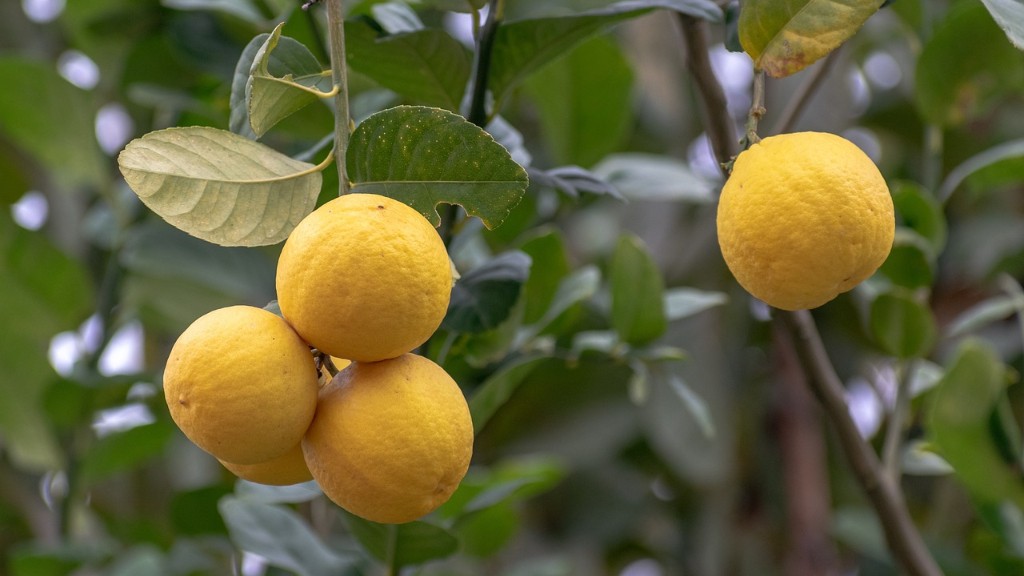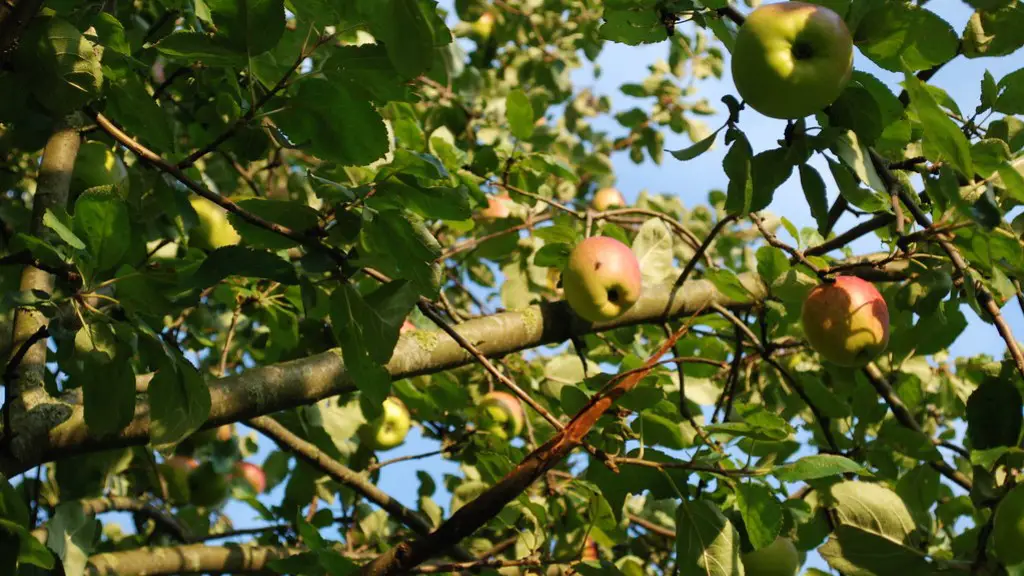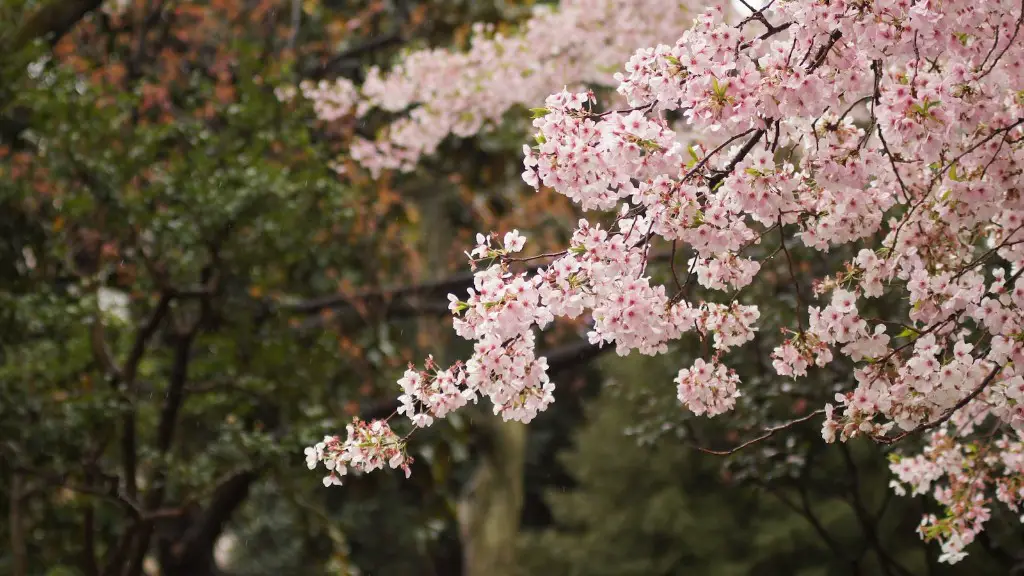What kind of tree enthusiast isn’t familiar with the majesty of the palm tree? These gorgeous plants are native to the tropical climates of the world, and can be found in some of the most stunning landscapes the earth has to offer. But the palm tree isn’t perfect – it can be tricky to tell if one is dying, and the effects of this can be devastating for all those who have a bond with it.
Many of the signs of a sick tree can be a bit difficult to spot, but proper observation and care will help you tell if your palm tree is dying. The first thing to be aware of is any discoloration that may appear on the leaves. If they start to curl, lose colour and become dry then you may be looking at a dying tree. The trunk can also change colour, becoming either a dull grey or yellow-brown, while the bark might become dry and brittle. This is the start of a sure sign that the tree’s health is declining.
Cracks in the trunk can also be a sign that your palm tree is dying. Over time and in particular climates, the trunk may start to crack due to the heat and changes in pressure that the tree will experience. If there is a notable increase in the amount and size of cracks, then you may be facing a dying tree.
There are other issues that can appear which might signal the death of your palm tree too. In particular, check for any kind of infestation, as this can be a sure sign that your tree is in trouble. Insects in the trunk, on the leaves or even on the bark can be an indicator that something is wrong, as can mushrooms that grow at the base of the tree. Another distinction is if the leaves turn a shade of yellow and then come crashing down; these are all signs that a tree is not in tip-top condition.
A professional should be called if you notice any of these signs, as prevention of a dying tree or getting better treatment for one should always be the goal. If the tree is dying but you proceed with proper care, there is an outside chance that it can live for several years yet. To ensure that a palm tree thrives, ensure that it is receiving enough water, fertilisation and sunlight. If these needs are met, then you should be able to detect signs of poor health quickly.
Examining the palm tree with your own eyes is the best course of action, as there are plenty of techniques at your disposal to investigate if your beloved tree is in trouble. With careful attention and a sensible eye, you should be able to get your beloved palm tree back to health in no time.
What are the Best Treatment Options?
The treatment of a dying palm tree will depend on the root cause of the problem, as this should be established by a qualified arborist. In the case of disease, pest infestations or insufficient nutrients, a tailored plan will be created to restore the health of the tree. This could involve clearing the area of debris, controlling pests, and the treating of the trunk and root system with the appropriate medication.
In certain cases, it is possible that the dying palm tree has to be removed for safety reasons. This could be seen as a last-ditch attempt to restore the health of the tree as it may no longer be possible to save it. No matter the reason behind this, it should always be done with the utmost care and should be done by a professional.
It could be that trimming the branches or leaves is an effective way to improve the condition of a tree, as doing so will provide the tree with more access to light, air and other nutrients that it requires. In addition, pruning can help open up the interior of the tree so that it can better absorb whatever fertilizers are applied.
Another factor that may need to be addressed is the soil in the area surrounding the tree. If the soil is not of the highest quality, then it is likely that the tree’s health is suffering and remedial measures may need to be taken.
Finally, it is important to provide the tree with a sufficient amount of nutrients each year. General fertilization to encourage growth might be helpful in this situation, with care and attention given to help the tree recover.
Can I Prevent My Palm Tree From Dying?
Yes – if you know what to look for. Early signs of poor health should be noticed, and any other problems should be swiftly addressed. It could be that the environment the tree is in is not suitable, from the soil to the weather, and if this is the case then taking steps to make the necessary changes can be a major help in boosting the tree’s health.
Providing your palm tree with the right amount of water is also important. In an ideal situation, the tree should receive one to two inches of water every week – this amount should be increased or decreased depending on the climate and season. Fertilizer should also be applied during the growing season, as without this a tree won’t get the nutrients it needs.
It is also essential that the tree gets the right amount of sunlight. Too much or too little can leave the tree in a poor condition. If the area has been exposed to prolonged periods of cold, then you may need to move the tree to a more sheltered location.
Finally, if any pests or diseases are found, they should be identified and treated straight away, as this can go a long way towards preserving the health of your tree. With the right care and attention, your beloved palm tree should be able to stay healthy and vibrant.
What Are the Common Causes for Palm Tree Death?
There are numerous causes for a palm tree to die. These can range from drought, to pests, and to inadequate maintenance from the owner. The most common causes for a Palm trees to die include the following:
- Lack of Moisture: This is the most common cause of death for a palm tree and is usually caused by a combination of lack of rainfall and inadequate irrigation.
- Pests and Diseases: Over time, pests and diseases can weaken the tree, leaving it vulnerable to further issues.
- Poor Soil Quality: Poor soil quality can lead to an underdeveloped root system, which in turn can cause the tree to become weak and vulnerable.
- Excess Salt: Excess salt can be found in some areas, and if the Palm Tree is exposed to high levels of salt, it can cause extensive damage.
- Exposure to Cold: Palm trees are tropical plants, meaning they cannot withstand cold temperatures for extended periods of time. Outlasting a cold winter can be difficult for these tropical beauties.
It is essential that owners take the right steps to protect their palm tree and prevent it from dying. With proper irrigation, fertilisation and pruning, a palm tree can typically withstand any difficult situation.
What is The Best Way to Bring A Dying Palm Tree Back to Life?
The exact type of treatment needed to bring a dying palm tree back to life will depend on the root cause of the problem. The first step to take is to identify the cause and then to adhere to a course of treatment that should help revive the tree.
Regular watering is a great way to help a tree that is struggling with a lack of moisture. Depending on the need for water, it may even be necessary to submerge the roots. Doing so will help the tree effectively absorb the nutrients necessary for its recovery.
If the tree is suffering from a pest or disease, then various treatments may have to be applied. Spraying insecticides or using fungicides should help rid the tree of such issues. It may be helpful to use a combination of insecticides and fungicides to ensure that any infestations are dealt with effectively.
If the soil surrounding the tree is of poor quality, then fertilisers may also need to be applied. Various types of fertilisers are able to provide the tree with the necessary nutrients, and this should be done in tandem with regular watering.
In more extreme cases, it may be necessary to remove the tree if the damage is too great. Doing so will depend on the extent of the damage and what options remain before the tree is gone for good.
What are the Benefits of Caring for a Palm Tree?
Caring for a palm tree has a range of benefits. Firstly, there is an aesthetic element, as a well-cared for tree looks much healthier and more vibrant. This can greatly enhance the look of a garden or other area.
Also, a healthy, vibrant tree is much less likely to suffer from pest or disease, meaning it can potentially last for much longer. Furthermore, an established and robust tree will be much better equipped to face any issues it may encounter.
Finally, there is the benefit of increased oxygen production that a healthy tree will provide. This has numerous positive effects, both on the environment and on the people who are exposed to the extra oxygen.
For all these reasons and more, taking the right steps to look after a palm tree can be a game-changer. With the right care and attention, your beloved tree can thrive into the future.




